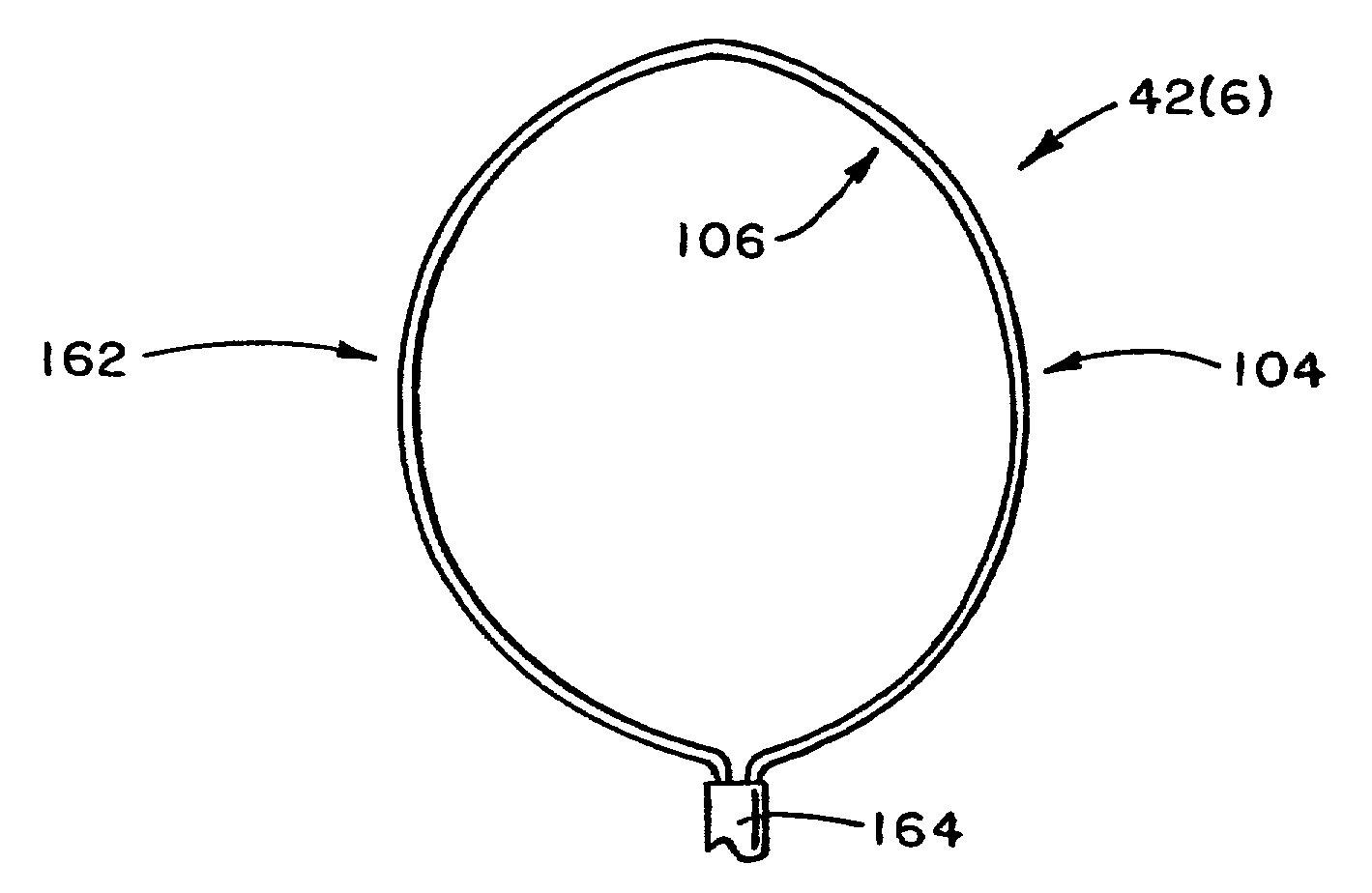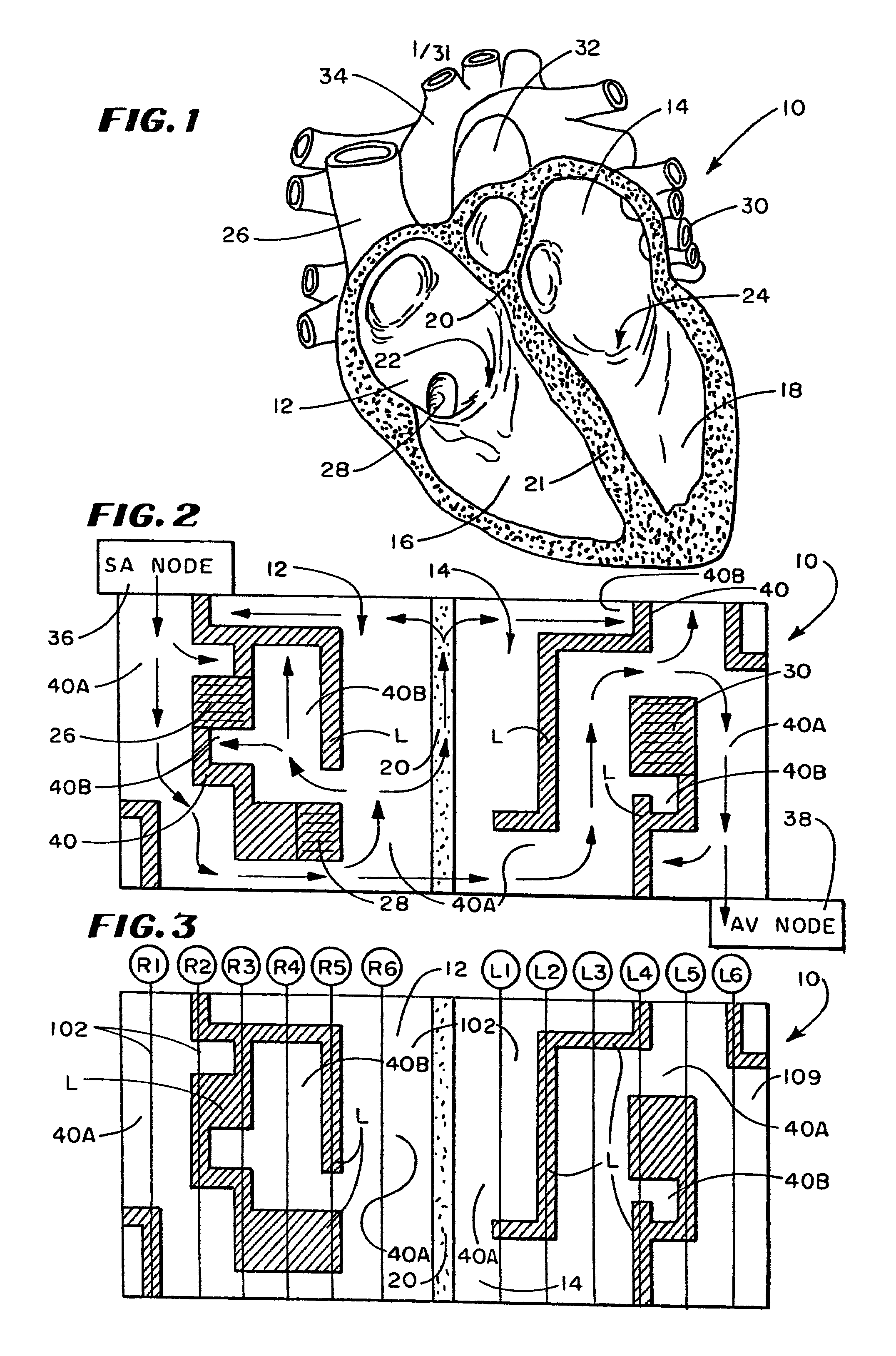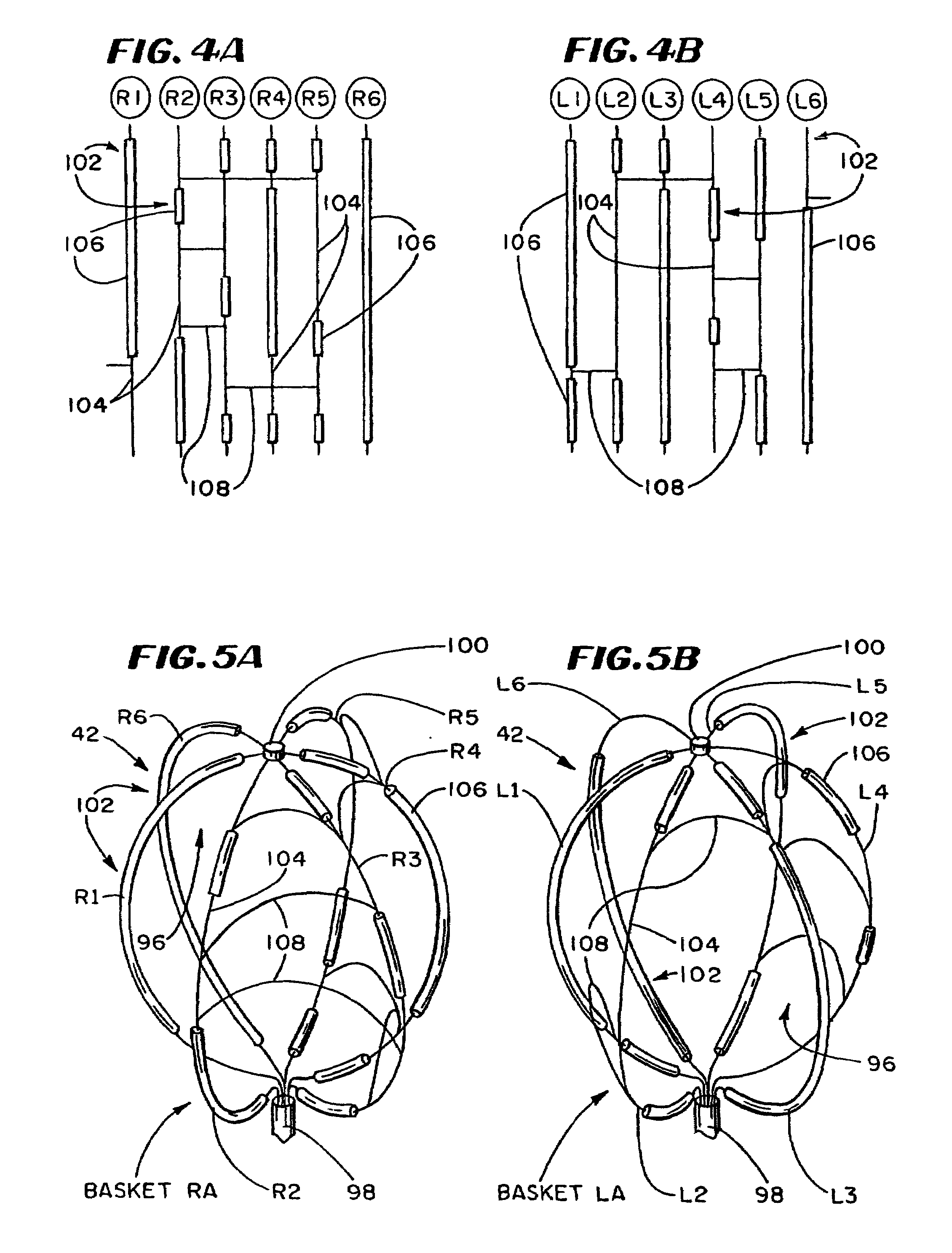Composite structures and methods for ablating tissue to form complex lesion patterns in the treatment of cardiac conditions and the like
- Summary
- Abstract
- Description
- Claims
- Application Information
AI Technical Summary
Benefits of technology
Problems solved by technology
Method used
Image
Examples
Embodiment Construction
[0079]The invention provides systems and methods for ablating tissue inside a living body. The invention creates elongated lesions, which can be either straight or curvilinear. The invention also creates patterns of lesions, which can be either simple or complex.
[0080]The invention lends itself to use in many relatively noninvasive catheter-based procedures. In contrast with complex, invasive surgical procedures, these catheter-based procedures introduce ablation elements into interior regions of the body by steering them through a vein or artery.
[0081]The Specification that follows focuses upon a particular field of use, which is the treatment of cardiac disease. Still, the diverse applicability of the invention in other fields of use will also become apparent.
[0082]FIG. 1 shows a simplified and somewhat diagrammatic perspective view of the human heart 10.
[0083]The views of the heart 10 shown in FIG. 1 and other Figures in this Specification are not intended to be anatomically accu...
PUM
 Login to View More
Login to View More Abstract
Description
Claims
Application Information
 Login to View More
Login to View More - R&D
- Intellectual Property
- Life Sciences
- Materials
- Tech Scout
- Unparalleled Data Quality
- Higher Quality Content
- 60% Fewer Hallucinations
Browse by: Latest US Patents, China's latest patents, Technical Efficacy Thesaurus, Application Domain, Technology Topic, Popular Technical Reports.
© 2025 PatSnap. All rights reserved.Legal|Privacy policy|Modern Slavery Act Transparency Statement|Sitemap|About US| Contact US: help@patsnap.com



